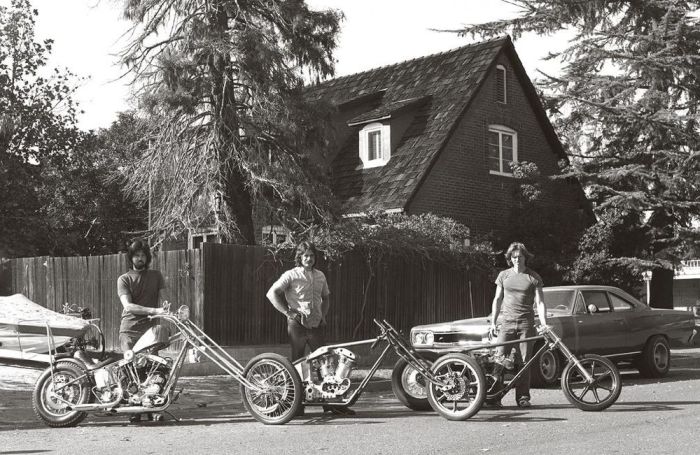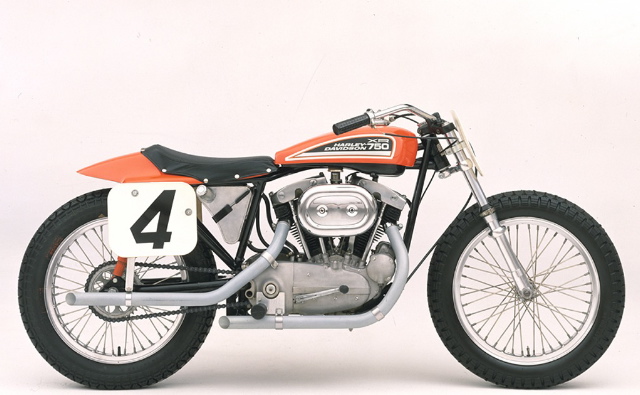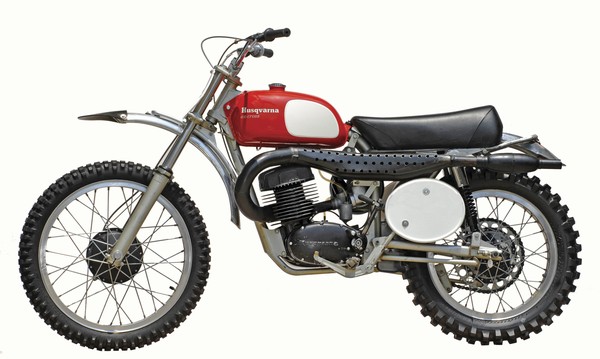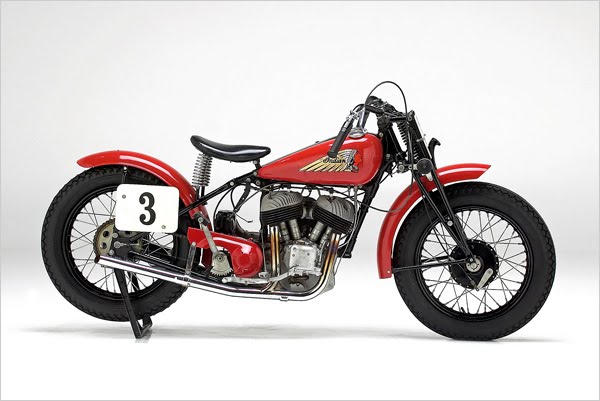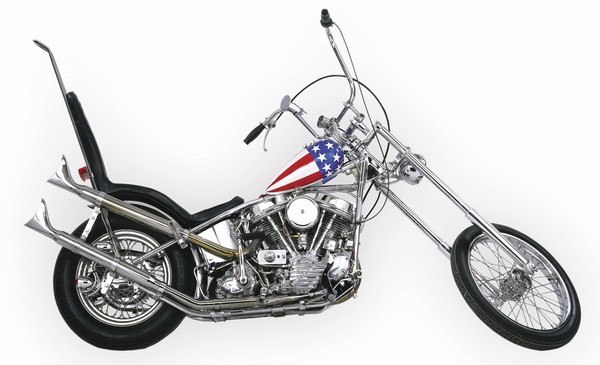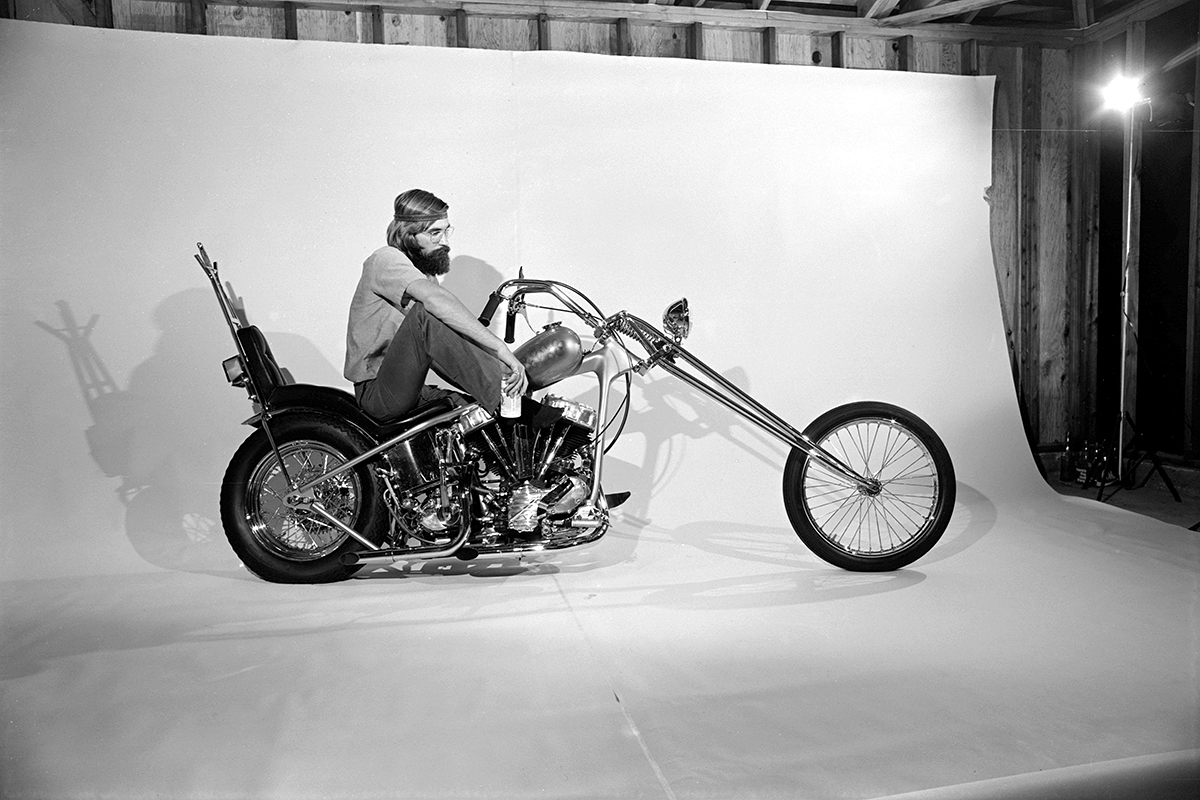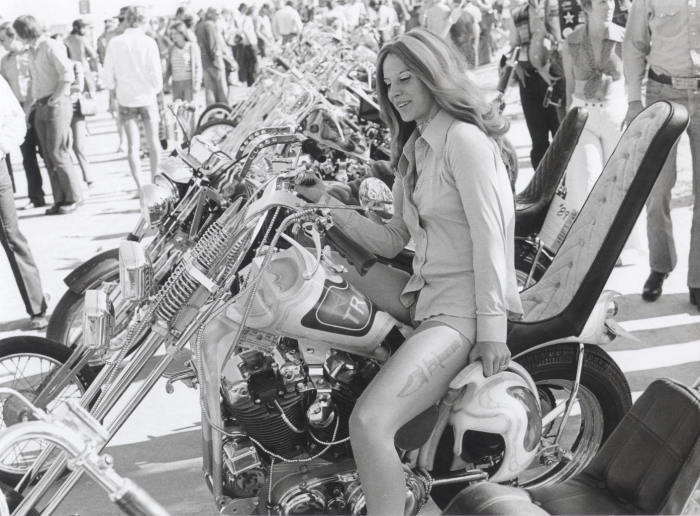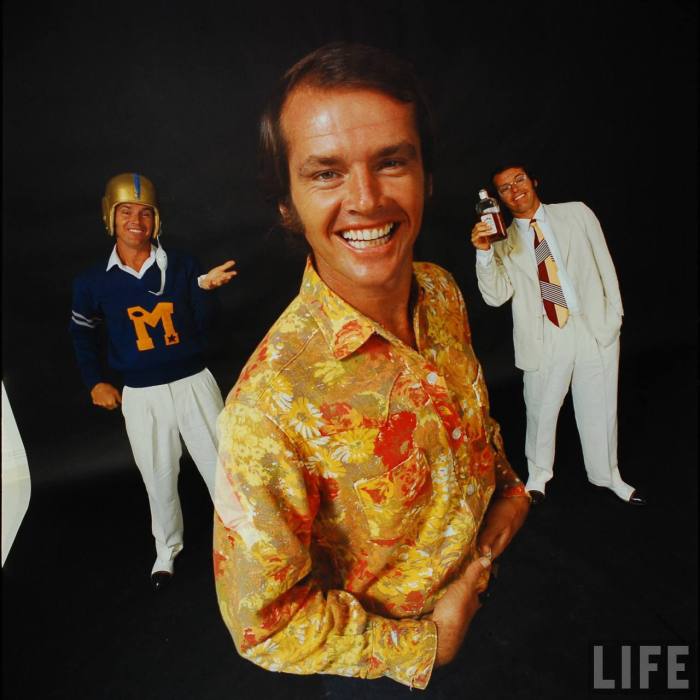John Harman (and I believe, brothers Harry & Bill Holland) in the early days of H & H Cycle which was born from John Harman’s revolutionary design for an internally sprung girder that was not only easy on the eyes– the performance and quality far exceeded what was commonly found on the market at that time, setting a new standard that others tried to followed– but there really was no other like Harman.
Tag Archives: chopper
HARLEY-DAVIDSON | AMERICAN IRON, INGENUITY & PERSEVERANCE
 The folks at Harley-Davidson were kind enough to invite me down to Milwaukee, WI for a tour of the museum, and their storied archives. This trip had deep, personal significance for me, as I grew up on the rumble and roar of Harley. There is no other sound or feel like it. It quickens the pulse, raises the hair on your arms, and brings a pie-eating grin to one’s face. The distinctive “potato-potato” idle of the v-twin is iconic to the brand, and resonates deeply within many loyal riders who have made their lives one with Harley-Davidson. It’s the personal stories of these cultural icons who forged their destiny with Harley-Davidson, evolving together through the decades, that I love– and that are a source of inspiration and pride to this day.
The folks at Harley-Davidson were kind enough to invite me down to Milwaukee, WI for a tour of the museum, and their storied archives. This trip had deep, personal significance for me, as I grew up on the rumble and roar of Harley. There is no other sound or feel like it. It quickens the pulse, raises the hair on your arms, and brings a pie-eating grin to one’s face. The distinctive “potato-potato” idle of the v-twin is iconic to the brand, and resonates deeply within many loyal riders who have made their lives one with Harley-Davidson. It’s the personal stories of these cultural icons who forged their destiny with Harley-Davidson, evolving together through the decades, that I love– and that are a source of inspiration and pride to this day.
In my mind, there is no other brand that better epitomizes the American spirit of Independence, ingenuity, and perseverance than Harley-Davidson. Hands-down. The cultural impact they’ve had on America (and around the world) is undeniable and evident all around us. It didn’t start with Easy Rider either, it goes back much further in time.
My mind immediately races back to the early days and the numerous innovations H-D had on franchising and branding. The following success of their notorious and ballsy “Wrecking Crew” racing team (that risked life & limb for victory on hostile dirt tracks and battered, oil-soaked wooden board tracks with dubious, improvised safety gear) further cemented Harley as the one to follow. I think of the soldiers returning from WWI & WWII– maybe they rode a motorcycle in wartime, or were pilots looking to replace the thrill of flying, and coming home they bought a Harley-Davidson because they yearned for an intense, physical experience of freedom and speed that only a Harley could give them. A lot of those same servicemen who fell between the cracks of what society or themselves deemed “normal” formed the first motorcycle clubs that would inspire Hollywood films, fashion, music, art and attitude to this day. And yes, 1969’s Easy Rider which became the iconic counter-culture biker film that drove the chopper / Harley customization craze for decades to come, and created a look and lifestyle that many would influence for generations to come. Hell, my stepdad was nicknamed “Hopper” after his character “Billy” in the film because of his dark looks, and that suede vest with fringe that would whip in the wind as he roared down the road on his ’79 Low Rider. Two things he impressed upon me– never ride a Sportster (chick bike), and never use your electric start (for pussies).
The point is, Harley-Davidson and those who ride them are a breed apart. There is a profound connection between man and machine that is beyond words. It’s more than a motorcycle— a Harley has a soul. A mighty soul born in a crude wooden shed over 100 years ago.
–
–
ca. 1903 — William S. Harley and Arthur Davidson built their first motorcycles in this simple structure. Harley-Davidson’s very first “factory” (if you can call it that)– a wooden 10′ x 15′ shed that sat in the back yard of the Davidson family home. In 1907 Harley-Davidson was incorporated and the company was valued at $14,200. (Rewind– Harley-Davidson was started in a freaking 10′ x 15′ shed?! That’s the American “can-do” spirit in a nutshell, people. When I first heard that, I realized there are no excuses for anyone to not get out there and make it happen.) — Image by © Harley-Davidson Archives
–
–
1939 — The original shed was later transplanted to the new Juneau Avenue factory (built in 1906, and still the site of Harley-Davidson’s corporate headquarters) as a symbolic reminder of the company’s humble beginnings. (The lesson– Never get so big that you don’t remember where you came from, folks. And never start acting like a big company– especially when you are one.) Tragically, the original shed was accidentally destroyed in the early ’70s by a careless crew doing clean-up at the H-D factory. — Image by © Harley-Davidson Archives
–
TSY’s FAVE FIVE ON SOUTHSIDERS MC | ICONIC BIKES THAT MADE HISTORY
Our friends over at SouthSiders MC run one of the hands-down, best bike sites going, and were kind enough to feature TSY in their ongoing feature called “Your Favorite Five”, which pretty much speaks for itself. Picking just five bikes is near impossible, so there may be a sequel coming up…
\Via SouthSiders MC–
Blogs have become an incredible tool of communication, bringing over a decade a level of power to the multimedia publishing that print barely reached in a century.
Nevertheless, the rules remain the same : real & exclusive content, real writing, real photography make the difference that provides readers and not zappers. The Selvedge Yard is among the best true web publications. Based on the fascination for “Americana” and the American style, his maker, Jon Patrick is also a fashion contibutor to the Italian men’s fashion ruler GQ. Jon’s roots are plugged into the American Movie History.
*
Some for beauty, some for brawn – all for their importance. How do you pick five? Should I stick to the classics, so its apples to apples? We’ll see…
Harley Davidson’s dominating, and sexy as all hell, flat track racer. First introduced in 1970, and seriously upgraded in 1972 as the aluminum “Alloy XR”, it not only became an icon on the dirt track, it was also Evel Knievel‘s weapon of choice. With its classic H-D orange/black graphic appeal and clean, uncluttered form – it’s a bike for the ages.
Husqvarna 1970 400 Cross
*
Husky’s icon that became synonymous with another icon – Steve McQueen. Featured in his 1971 film, “On Any Sunday“, Husqvarnas were the most badass and beautiful motocross bikes of their day, with their 400 Cross becoming a highly coveted classic. The legendary Malcolm Smith tore it up alongside McQueen on an innovative eight-speed Husky 250, which he also used to handily dominate the competitive off-road circuit. Hell yeah, Husky!
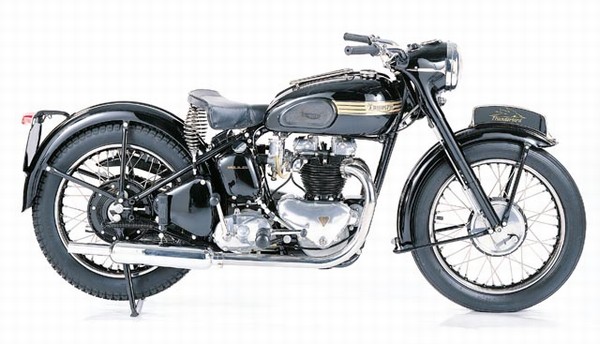
In the 1950s, there were more Triumphs sold in the U.S. than any other country. Their top-end Thunderbird 650cc vertical twin, with a little tinkering, could top out at 130 mph. A great bike, but fairly limited in offering. They were available in one color only – blue. So when public demand cried-out for a black Triumph, they finally released the Blackbird in 1953 – and it still slays me every time I lay eyes on her. Another important note – Brando, a motorcyclist himself, rode his own ’50 Thunderbird in the iconic film, “The Wild One”.
This beauty once belonged to none other than, you guessed it – Steve McQueen. Here you see the motorcycle company’s iconic Indian Head logo on the fuel tank. I personally prefer the pared-down Scout over the heavy-looking Chief, but they are beauties too. By the 1940s, Indians began to sport stunning paint jobs with up to 24 colors available, and several two-tone options – making them some of the most beautiful bikes ever produced.
Harley-Davidson Captain America Chopper
Growing up in the ’70s, there were 2 bikes that were emblazoned in my mind – Evel Knievel’s H-D XR-750, and Easy Rider’s Captain America Chopper. The vision of Peter Fonda, it was built by (I love this part…) a Black brother – Ben Hardy from Los Angeles, starting with an old ’52 Panhead Hydra-Glide bought at a Police Auction. It became an instant icon that brought choppers to the forefront of motorcycling, and really raised the bar for custom builds. Two were built for Easy Rider – one survived. Hell yeah, Captain America!
It’s hard to stop at five, I feel a “Part II” coming on…
JP
ARLEN NESS’ SECRET WEAPON DURING THE ’70s CHOPPER BOOM | JEFF McCANN
Jeff McCann, who discreetly signs his works with his hidden signature “Motorcycles Forever” got his first bike back in ’65, at the age of 20. An accomplished artist, McCann began customizing motorcycles a few years later, and soon found himself with a steady side-gig of painting and customizing friend’s bikes.
By the 1970s, with his incredible skills and the Easy Rider chopper boom in full force, McCann was in hot demand. He opened his own custom bike shop in the San Francisco Bay area – as did Arlen Ness. Arlen, a master builder, was also a good painter– but nothing like McCann. McCann also brought serious design, photography, and printing skills to the table– contributing heavily to the first Ness catalog and logo. It was a partnership that benefitted both sides, and that lasted for years. McCann’s saved personal images and memories of that time are truly priceless–
Catalog Cover Shoot. Jeff McCann ~ This is a full view of the setup in my garage for the cover shoot for the second edition of our parts catalog. That’s me waiting to see if the photographer needs the bike moved, which is also why I am in my stocking feet so as not to mar the paper drape. I purchased two white paper background drapes and taped them together to get a wide enough “infinite” background for the bikes and models. After advertising in the local newspaper want ads we hired two women who were inexperienced models but eager to work with the local “chopper guys”. Scanned from a 37 year old 35mm negative shot by John Reddick in September 1972. You can see the calendar this session produced here.
–
Theme Girl Julie. Jeff McCann ~ In the fall of 1969 my friend Chris and I decided to open a retail store selling “Chopper parts”. We had built and sold 4 custom bikes that year and all our friends were asking how to buy the parts mail order. Ed Roth published “Choppers” magazine which contained ads including one for AEE Choppers of southern California. We had purchased parts from them for my first panhead chopper that same year. Deciding on the name ” CJ custom cycle parts” we made a business plan and went to the bank for a start up loan. To say the bankers laughed at us would be exaggeration but they declined our request. I complained of their shortsightedness to my co-workers at the newspaper and Fran Walling, a fellow artist in the display advertising department, offered to loan me the money from part of her husbands life insurance settlement. We agreed to pay her 1% more than bank rate on a two year repayment plan.
And so with $5,000 in the bank we rented a small store front and made plans for a January 1970 opening. The plan was for Chris to man the retail store on the weekdays while I worked full time at the newspaper, then on Saturdays I would be behind the counter. We really had no clue how the profit margin of a retail parts business should have worked, both of us had only high school educations and in 1969 I was 23, married with an infant daughter and Chris was 19 and two years out of school. To say we were more lucky than smart is an understatement. This photograph of Julie, our theme girl, wearing our logo t-shirt was taken on January 10,1974 by John Reddick. Exactly four years to the day after we had opened our first store and at the height of our business success. Scanned from a 35 year old 35mm negative.
–
Wheel Truing Shop. Jeff McCann ~ Work area in our first Stockton store, note the vise holding a threat rolling machine attached to a reversible drill. We cut the blank spoke to length with a small bolt cutter, ground the end round on the small grinder next to the vise, and then inserted the blank into the roller. The sign says we charged $28.88 for a set of spokes custom made and chromed to fit your application. Hundreds of wheels were laced and trued each year by either Chris or Kurt Bacon, a highschool kid who hung around my garage paintshop at home. He worked after school at the store and got school credits for “work experience” on his report card. After graduation he came to work for us full time and was a valuable employee and friend. Scanned from a 1971 b/w print.
BIKES, BIKINIS, BEER & BEACH PT. III VINTAGE DAYTONA BEACH BIKE WEEK
Holy Handlebars, Batman! Regis Decobeck has blessed us all with another installment of old-school Daytona Beach black & white images from ‘74 – ‘78. Regis picks up where – BIKES, BIKINIS, BEER & BEACH II VINTAGE DAYTONA BEACH BIKE WEEK– left off, with more eye candy that’s sure to either take you down memory lane, or give you that sick feeling that you were born too late. Either way — Enjoy y’all.
–
Circa 1974 – 1978 ~ Another Kustom WTF, Daytona Beach ~ image by Regis Decobeck
–
Ca. ’74 – ’78 ~ Bikers window-shopping (AMF, not Harley’s Golden years…) Daytona Beach ~ image by Regis Decobeck
Ca. ’74 – ’78 ~ Dig the aggressive ink on the thigh, Daytona Beach ~ image by Regis Decobeck
BIKES, BIKINIS, BEER & BEACH PT. II VINTAGE DAYTONA BEACH BIKE WEEK
Part II of an amazing rewind back to old-school Daytona Beach courtesy of Regis Decobeck, who was there to capture these incredible black & white images from ’74 – ’78. Thank God for that. Regis saw the original post – BIKES, BIKINIS, BEER & BEACH | VINTAGE DAYTONA BEACH BIKE WEEK – and generously offered-up these priceless gems for the enjoyment of our TSY readers. God bless ya’! Enjoy y’all.
–
Circa 1974 – 1978 ~ Krazy Kustom Rat Wagon, Daytona Beach ~ image by Regis Decobeck
–
Circa 1974 – 1978 ~ Kustom Tank Paint Job, Daytona Beach ~ image by Regis Decobeck
–
Circa 1974 – 1978 ~ Kustom Trike-ness, Daytona Beach ~ image by Regis Decobeck
–
BIKES, BIKINIS, BEER & BEACH | VINTAGE DAYTONA BEACH BIKE WEEK
Daytona Beach during the Golden age of the ’70s & ’80s. Before Bike Week became some kinda three-ring commercialized circus of fake boobs on a stick– there were riders and vanners of a kindred spirit who came to hang out, party on the beach, and chill. They did it outta love instead of the hype. (And the boobs were real, man.) Kinda makes you wanna take it by force from the corporate pricks, and get back to what made it great in the first place– brotherhood, escaping the grind of the rat race, and finding a little soul on the road. My favorite Flickr find ever. Amazing shots ca. 1979 by Tom Reavis.
Truly one of TSY’s most popular posts!
Sweet Old-School Harley Shovelhead chopper –photo by Tom Reavis
–
Anyway (or anywhere) you put it- USA #1! –-photo by Tom Reavis
–
Strap it on and go get some at Daytona Beach. –-photo by Tom Reavis
JACK NICHOLSON | EASY RIDER, 1969
*
Jack Nicholson
*
To mention the 1969 film Easy Rider is beyond cliche anymore– but I remember growing up with a lot of Easy Rider references around the house as a kid. The old man fancied himself as “Hopper”, a nickname given to him by his biker buddies for his resemblance to Dennis Hopper’s Billy in the pivotal biker flick. He milked that one for all it was worth. I also remember a certain amount of disdain from the biker crowd towards Peter Fonda starring as Captain America. Sure, they loved the iconic chopper (the real star of the film)– but Peter Fonda was considered by real bikers to be a Hollywood punk that grew up with a silver spoon in his mouth (read: pussy) who had no business on a Harley.
__________________________________________________________________
*
